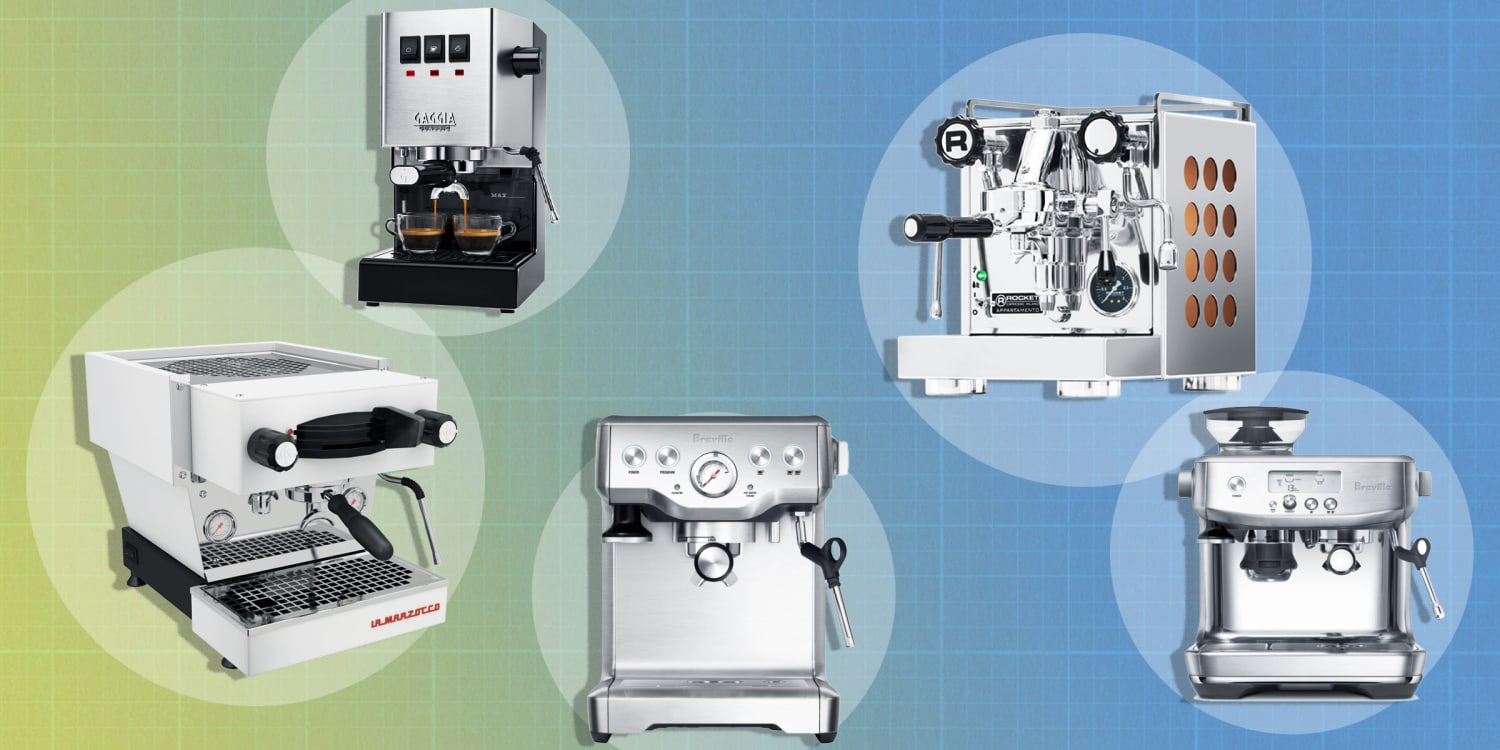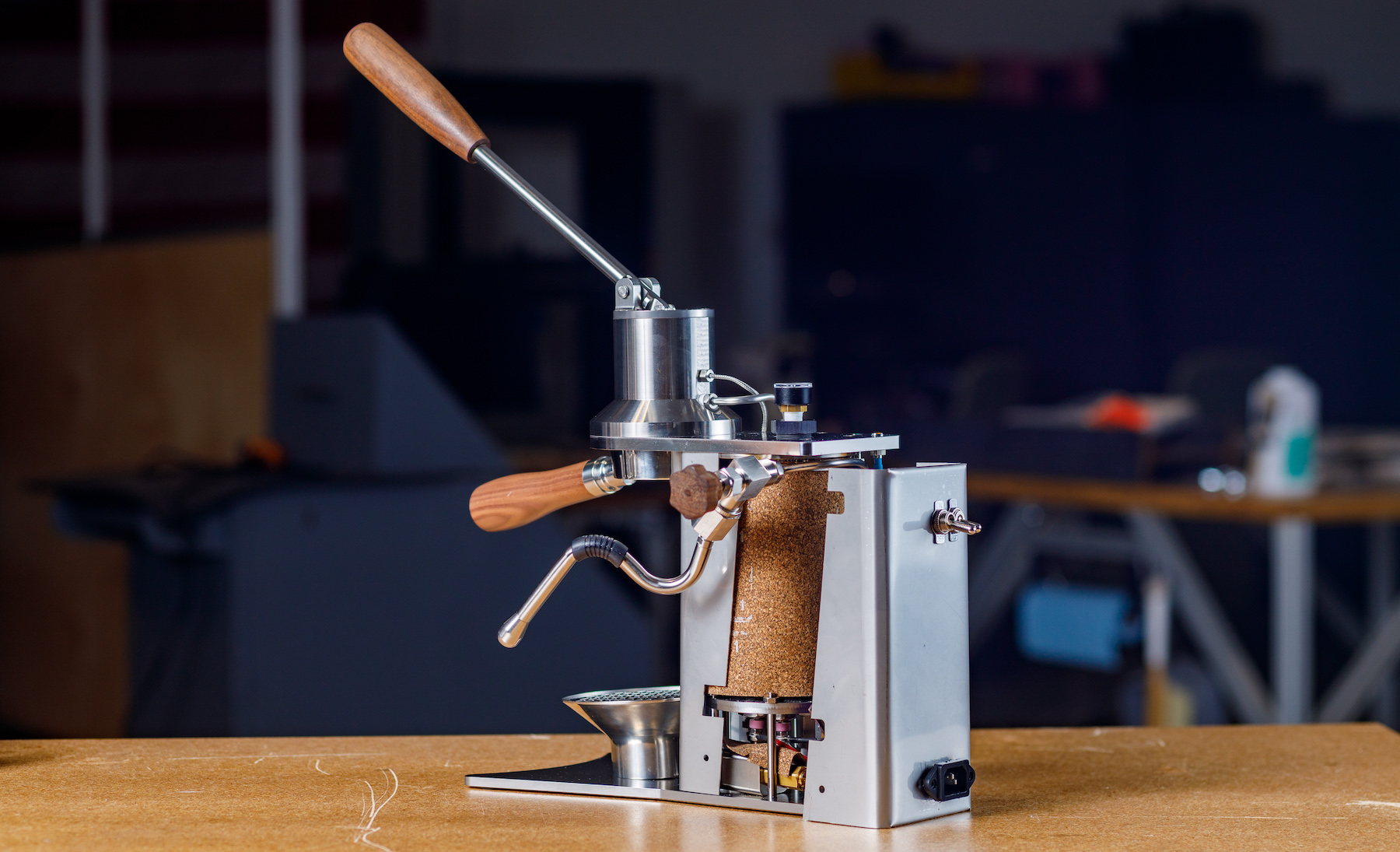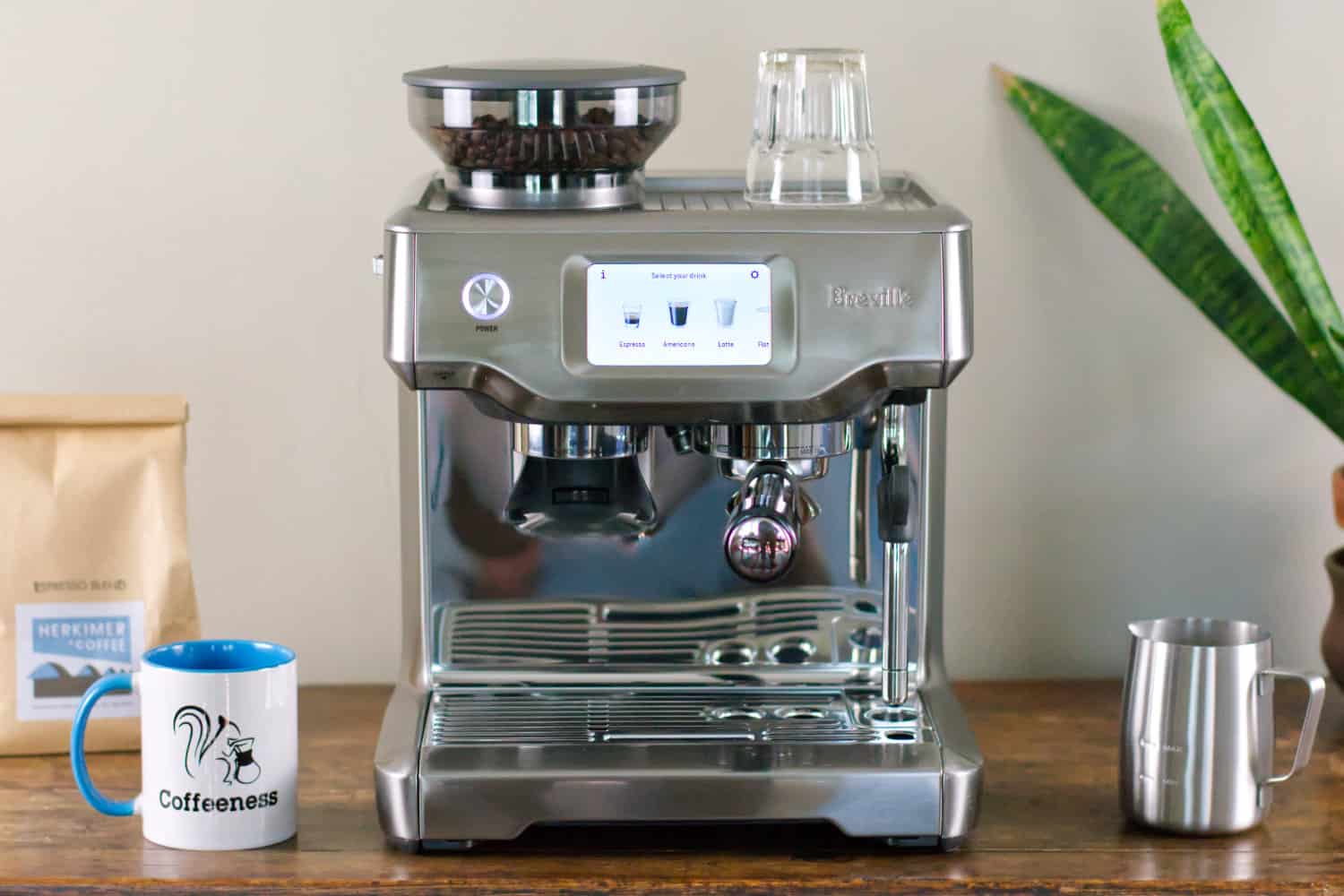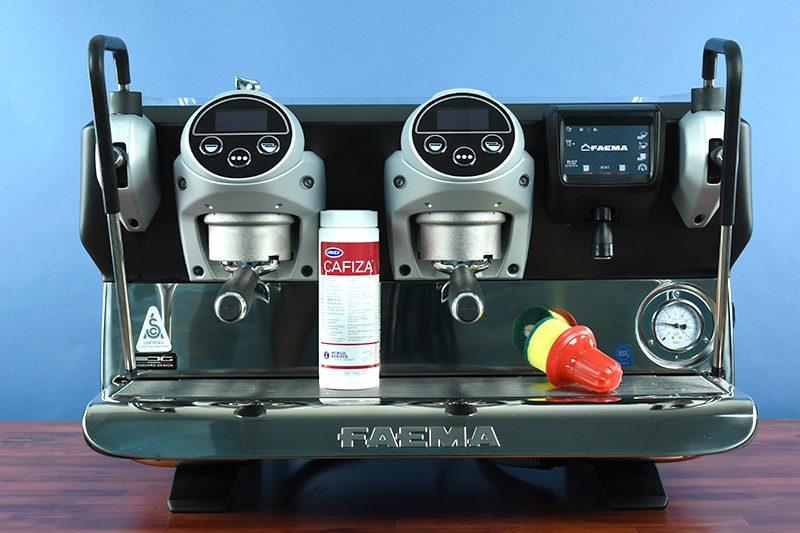What is An Espresso Machine Group Head? - Essential Guide

What is An Espresso Machine Group Head? - Essential Guide
The espresso machine group head is an essential component in crafting the perfect cup of espresso. As the heart of the machine, the group head is responsible for bringing water out of the machine and into the filter basket, where it interacts with coffee grounds and turns them into the concentrated, flavorful shots we know and love. Positioned at the front center of most espresso machines, its intricate design and functionality are key to delivering high-quality espresso. Various types of group heads exist, each with their own unique mechanisms and styles. Despite the diversity in design, their primary function remains the same: to act as the point of contact between water and coffee grounds. A well-maintained and properly functioning group head ensures that hot water is distributed evenly across the coffee grounds, extracting the optimal amount of flavor for a.
The espresso machine group head is an essential component in crafting the perfect cup of espresso. As the heart of the machine, the group head.
The espresso machine group head is an essential component in crafting the perfect cup of espresso. As the heart of the machine, the group head is responsible for bringing water out of the machine and into the filter basket, where it interacts with coffee grounds and turns them into the concentrated, flavorful shots we know and love. Positioned at the front center of most espresso machines, its intricate design and functionality are key to delivering high-quality espresso.
Various types of group heads exist, each with their own unique mechanisms and styles. Despite the diversity in design, their primary function remains the same: to act as the point of contact between water and coffee grounds. A well-maintained and properly functioning group head ensures that hot water is distributed evenly across the coffee grounds, extracting the optimal amount of flavor for a remarkable espresso experience.
Key Takeaways
The group head is the heart of an espresso machine, responsible for bringing water to the coffee grounds.
Different types of group heads exist, yet they all serve the primary function of acting as a point of contact between water and coffee.
Maintaining a well-functioning group head is crucial for optimal flavor extraction in espresso.
Browse espresso machines by number of group heads:
1 Group Espresso Machines
2 Group Espresso Machines
3 Group Espresso Machines
What Is An Espresso Machine Group Head
The espresso machine group head is the heart of the machine, playing a vital role in creating a great cup of espresso. Typically located at the front of the machine, it is a metal, permanent attachment that brings water out of the machine and into the filter basket.
The group head connects the portafilter to the espresso machine boiler. When triggered by the barista, it releases hot water through the portafilter and into a shot glass. It consists of numerous tiny holes that disperse water onto the fresh coffee grinds, initiating the process of brewing the perfect espresso.
Different types of group heads can be found in espresso machines, with electrically heated group head machines being popular among entry-level machines. Although espresso machines may have various complex parts, the group head is often considered the centerpiece and most talked-about component.
In summary, the espresso machine group head is an essential part of the machine that facilitates the brewing process by releasing hot water, connecting the portafilter to the boiler, and dispersing water onto the coffee grinds, resulting in a delicious cup of espresso.
Types of Group Heads
In the world of espresso machines, the group head plays a crucial role in creating the perfect shot of espresso. It is the centerpiece of any espresso machine and is responsible for connecting the machine to the group handle and the water to the coffee. There are primarily two types of group heads that are commonly found in the market: Lever group heads and E61 group heads.
Lever group heads are further divided into two subcategories: spring piston and manual piston. The spring piston lever group head uses a spring mechanism to apply pressure to the water, forcing it through the coffee grounds. This type of group head provides consistent pressure during the extraction process, making it easier for baristas to control the quality of the espresso. On the other hand, manual piston lever group heads require the barista to manually apply pressure to the water using a lever. While it can be more challenging to achieve the perfect shot with this type of group head, many seasoned baristas appreciate the level of control it offers.
E61 group heads, also commonly referred to as thermosyphon group heads, are another type of group head predominantly used in the espresso machine industry. The E61 group head relies on a thermosyphon heating system, where the heat exchangers inside the coffee machine heat the water in the boiler. This hot water rises through the group head, causing it to heat up. The water will continue to rotate from the heat exchanger to the group head and back to the boiler, ensuring thermal stability throughout the day. This type of group head is widely praised for its consistent temperature control, which is vital for producing high-quality espresso.
To sum up, lever group heads and E61 group heads are the two major types of espresso machine group heads, each offering its own set of advantages and challenges. Lever group heads allow for maximum control, while E61 group heads provide superior thermal stability. Ultimately, the choice will depend on the preferences and needs of the individual or establishment using the espresso machine.
Operation of the Group Head
The group head is an essential component of an espresso machine, responsible for connecting the portafilter to the espresso machine boiler. Its primary function is to facilitate the extraction process by allowing hot pressurized water to pass through the coffee grounds held in the portafilter basket.
In order to produce a high-quality espresso, the group head first needs to heat up appropriately. This is done by circulating hot water from the machine's boiler through the group head, ensuring that it reaches the right temperature. An espresso machine may have a saturated or semi-saturated group head, with the primary difference being the level of thermal stability maintained.
Once the group head is heated, the extraction process begins when the user attaches the portafilter, filled with finely ground coffee, to the group head and activates the espresso machine. At this point, hot water under pressure travels from the boiler, through a diffusion plate, and into the portafilter basket.
The diffusion plate serves the vital purpose of evenly distributing water over the surface of the coffee grounds, ensuring a uniform extraction. As pressure builds, the water is forced to pass through the coffee grounds, extracting the various flavors, oils, and other compounds that constitute the final espresso product.
The extracted liquid then flows out through the bottom nozzles of the portafilter and into the waiting cup or carafe. The entire extraction process is relatively quick, usually taking around 25-30 seconds to complete a standard espresso shot.
Proper cleaning and maintenance of the group head are crucial, as residual coffee oils and natural wear can eventually affect the quality of the espresso extraction. Regular backflushing and replacing worn-out gaskets are essential practices that help ensure the longevity and consistent performance of the group head.
Impact on Espresso Quality
The group head is a critical component of an espresso machine and plays a significant role in determining the quality of the espresso produced. It is the part of the machine where water from the boiler is dispensed into the coffee filter basket. The group head connects the machine to the group handle and facilitates the flow of water through finely ground coffee beans under pressure.
One of the most important factors that the group head affects is the brew temperature. Brew temperature has a substantial impact on the flavor of the espresso, as the coffee beans' chemical compounds are responsible for the taste, and the extraction process is highly temperature sensitive. A well-maintained group head ensures a stable and accurate brew temperature, leading to consistent and delicious espresso shots.
Additionally, the group head houses the group gasket, a large rubber O-ring that fits inside a groove in the group head. This gasket forms a tight seal between the group head and the portafilter, ensuring that there is no leakage of water or coffee during the brewing process. A properly functioning group gasket is essential for maintaining proper pressure during espresso extraction.
Regular maintenance and cleaning of the group head are crucial to maintaining its performance. Replacing components like the group gasket and ensuring the group head is free from any coffee residue or buildup will help guarantee the best espresso quality possible. A clean and well-maintained group head enables the machine to produce consistent and flavorful espresso shots, making it an indispensable part of expert coffee brewing.
Key Parts of the Group Head
The group head is a crucial component in an espresso machine, responsible for creating a perfect cup of espresso. This section will explore the key parts of the group head, focusing on the portafilter, group gasket, and shower screen.
Portafilter
The portafilter is one of the most critical parts of the group head. It is a handle-like attachment with a metal basket where the finely ground coffee is placed. The portafilter is inserted into the group head, creating a seal that allows water to flow through the coffee grounds under pressure. This process extracts the rich flavors and oils in the coffee, creating a delicious espresso shot. The portafilter is usually made of metal, such as brass or chrome-plated brass, which ensures heat stability for consistent espresso extraction.
Group Gasket
The group gasket is another essential part of the group head. It is a rubber or silicone seal that sits between the group head and the portafilter. The group gasket creates a tight seal when the portafilter is locked into the group head, ensuring that water flows through the coffee grounds without leaks or inconsistencies. Over time, group gaskets can wear down and lose their elasticity, which may cause water to leak during the espresso-making process. Therefore, it is necessary to periodically check and replace the group gasket as part of regular espresso machine maintenance.
Shower Screen
Lastly, the shower screen is a vital component in the group head. It is a perforated metal disk that sits beneath the group gasket and above the coffee grounds in the portafilter. The shower screen evenly distributes pressurized water over the coffee grounds, ensuring a consistent and balanced extraction. This process contributes to the rich and nuanced flavors of espresso. The shower screen also helps to keep the group head clean by filtering out any stray coffee particles, preventing them from entering the machine's internal components. Regular cleaning and maintenance of the shower screen are crucial for maintaining optimal flavor and cleanliness in any espresso machine.
Maintenance and Cleaning of the Group Head
A well-maintained group head plays a crucial role in the quality of espresso produced by your espresso machine. Regular cleaning and maintenance help prevent the buildup of coffee oils and minerals, which can adversely affect the taste of your coffee.
To begin the cleaning process, use a soft cloth or brush to gently clean the group head, ensuring you reach all the nooks and crannies. Avoid using abrasive materials or harsh chemicals, as they can damage the machine.
In addition to daily cleaning using a brush or cloth, it's essential to perform a full backflush regularly. This process involves using a machine brush to scrub the group heads, loosening and removing coffee grounds. Utilize coffee machine detergent and a blind filter to do this more effectively.
Repeat the backflush process until the water coming out is clear, ensuring the removal of any residual coffee or detergent. It is highly recommended to pull several espresso shots after completing the backflush, eliminating any lingering detergent flavors in future espressos.
Keeping the group head of your espresso machine clean and well-maintained will not only prolong the life of your equipment but also consistently produce high-quality espresso shots that you can savor and enjoy.
Conclusion
An espresso machine group head, also known as a brew group or brew head, is a fundamental component of the espresso brewing process. It connects the machine to the portafilter and is responsible for dispensing water from the boiler into the coffee filter basket.
In its essential function, the group head is designed for efficiently forcing water under pressure through finely ground coffee beans to produce that rich, bold shot of espresso. This pressurized brewing method not only differentiates espresso from other types of coffee but also contributes to its unique flavor profile and texture, such as its signature crema.
Regardless of the type of espresso machine—manual, semi-automatic, or fully automatic—the group head plays a crucial role in ensuring proper extraction and producing high-quality espresso shots. This vital part of the brewing process is where it all begins, so maintaining a clean and well-functioning group head is essential for any serious coffee enthusiast or professional barista.

A Step By Step Guide On How to Make Coffee With An Espresso Machine

The 8 best espresso machines for home baristas

Best Home Espresso Machine in 2024: From Breville to DeLonghi

De'Longhi Stilosa Manual Espresso Machine, Latte & Cappuccino Maker, 15 Bar Pump Pressure + Milk Frother Steam Wand, Black / Stainless, EC260BK, 13.5 x 8.07 x 11.22 inches: Home & Kitchen

Modern Lever Espresso That Won't Break the Bank: The Argos » CoffeeGeek

The best manual espresso makers in 2023, tried and tested

Breville Barista Touch Review 2024: Can't Touch This!

Coffee System Cleaning Guide

A Guide To Dialling In Espresso - Perfect Daily Grind


